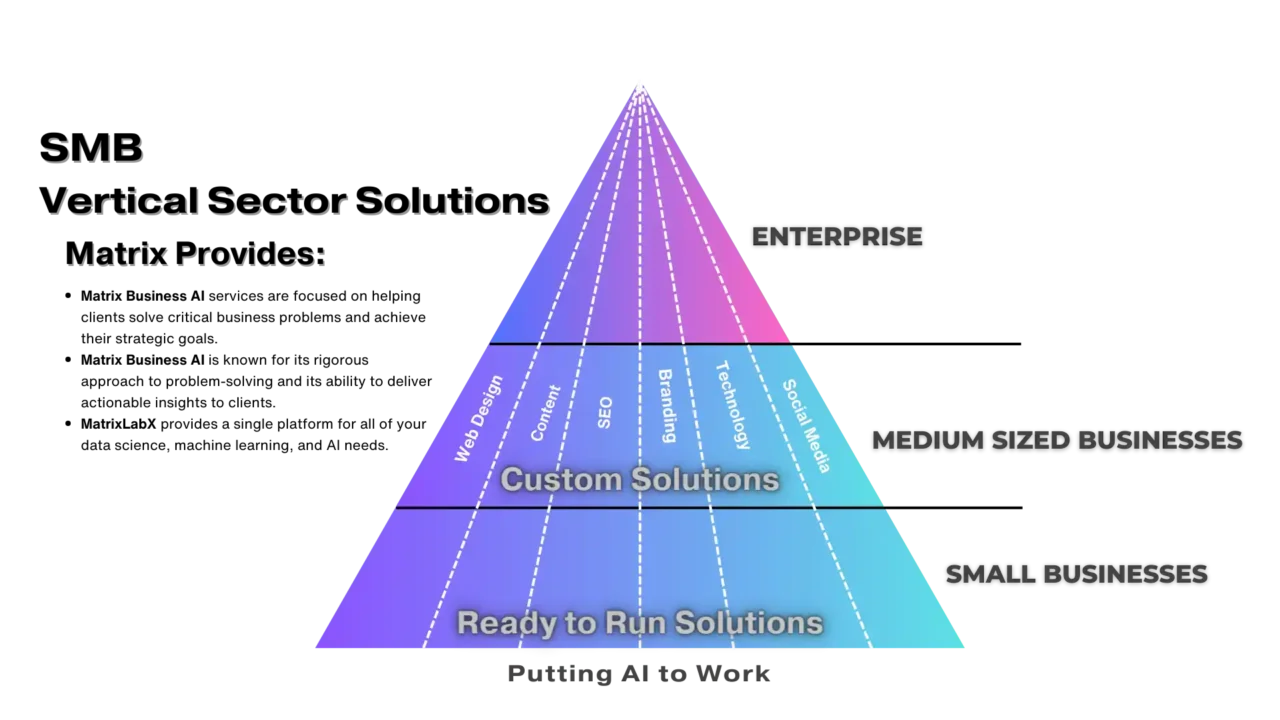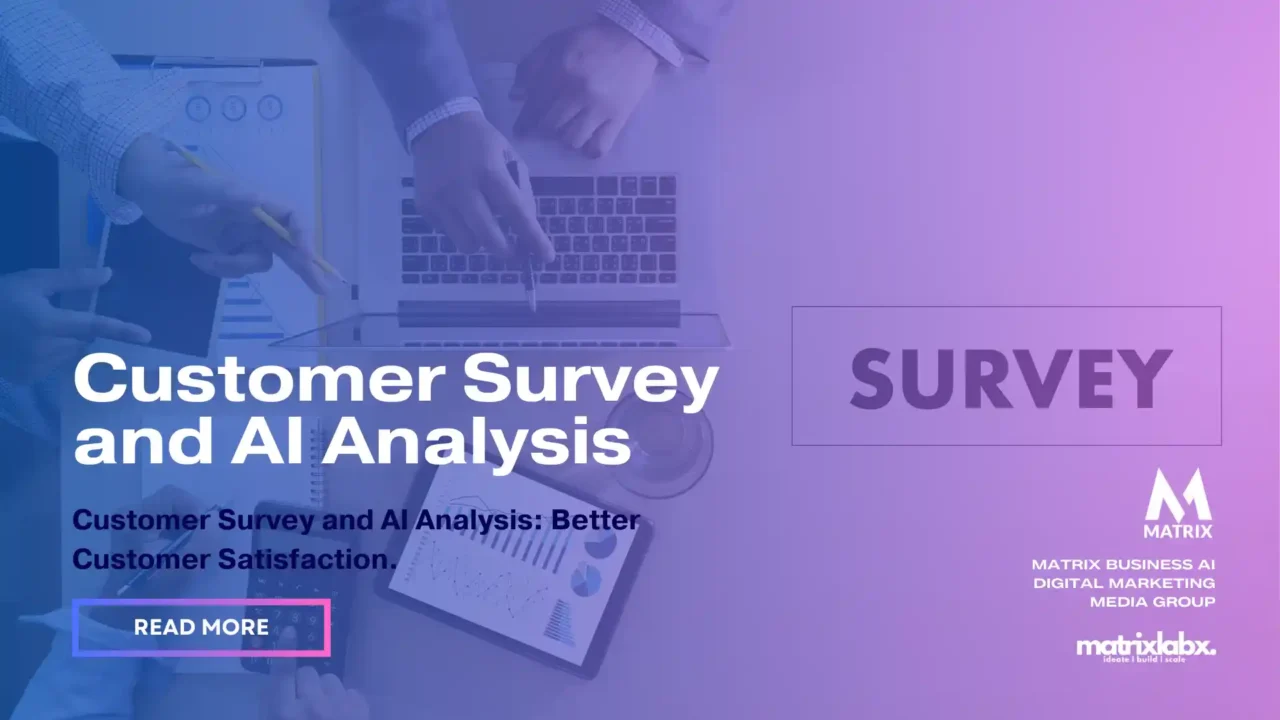Customer Survey and AI Analysis: Increasing Customer Satisfaction
Customer Survey and AI Analysis: Better Customer Satisfaction
Cracking the Customer Code: How AI Unlocks Hidden Insights in Surveys
Imagine you have a direct line to your customers’ thoughts, feelings, and desires. Every question answered, and every comment shared reveals a piece of the puzzle: their experience with your brand.
But with mountains of data at your feet, how do you translate it into actionable insights? Enter the revolutionary world of AI-powered survey analysis.
No more drowning in spreadsheets: AI cuts through the noise, swiftly categorizing and analyzing responses, from numerical ratings to open-ended essays. Gone are the days of manual coding and endless hours spent deciphering trends.
Instead, powerful algorithms uncover hidden patterns and connections you might never have seen, painting a vivid picture of customer sentiment and behavior.
But AI isn’t just about crunching numbers: it delves deeper, understanding the emotional undercurrents in every response.
Sentiment analysis identifies positive, negative, and neutral feedback, while advanced natural language processing unlocks the meaning behind the words. This emotional intelligence allows you to identify areas for improvement and connect with your customers on a deeper level.
So, are you ready to unlock the secrets hidden within your customer surveys? Join us as we explore the fascinating world of AI-powered analysis, where data transforms into understanding, and understanding fuels better products, services, and customer experiences.
Beyond the Hype: Surprising Stats on Customer Surveys and AI Analysis

While the potential of AI in customer surveys is well-known, some fascinating stats often fly under the radar. Dive into these hidden gems to gain a fresh perspective:
- AI isn’t replacing humans, and it’s empowering them: While AI automates mundane tasks, 70% of customer service professionals believe AI helps them focus on complex issues and build stronger customer relationships. (Source: Salesforce State of Service Report 2023)
- Open-ended questions get smarter: 72% of businesses struggle to analyze open-ended responses effectively. However, AI-powered text analysis can categorize and extract key themes, unlocking valuable qualitative insights. (Source: Qualtrics 2022 Customer XM Benchmark Report)
- Emotional AI goes beyond sentiment: Forget “happy” or “sad.” Advanced AI can detect nuanced emotions like frustration, confusion, or excitement, helping brands address specific customer pain points and opportunities. (Source: IBM Watson Tone Analyzer documentation)
- Predictive power beyond purchase intent: AI can predict customer churn with up to 90% accuracy, allowing businesses to intervene and retain valuable customers proactively. (Source: Aberdeen Group report “The Impact of AI on Customer Experience”)
- Ethical considerations are key: 83% of consumers are concerned about how companies use their survey data. Transparency and responsible AI practices are crucial for building trust and fostering positive customer experiences. (Source: PwC Global Data Ethics Survey 2023)
These stats are just the tip of the iceberg. Explore the world of AI-powered customer surveys and uncover hidden gems that can transform your business and customer relationships.
The Double-Edged Sword: AI in Customer Surveys – 3 Challenges for Service Managers
Customer surveys paired with AI analysis offer a treasure trove of insights, but navigating this data-driven landscape can be tricky for busy customer service managers. While AI automates tasks and reveals hidden patterns, it also presents unique challenges that require careful consideration. Let’s delve into three key hurdles service managers might face:
1. Information Overload:
Imagine opening a treasure chest not filled with gold but with an avalanche of information. That’s the risk with AI-powered surveys. While the sheer volume of data is valuable, deciphering and prioritizing it can be overwhelming. Managers might struggle translating technical reports into actionable steps, leaving them feeling lost in a sea of statistics.
2. The Black Box Conundrum:
AI algorithms work their magic behind the scenes, but their inner workings remain mysterious. This “black box” effect can leave managers unsure of how specific insights were derived, making it difficult to validate and explain findings to stakeholders. Lack of transparency can breed distrust and hinder the adoption of valuable recommendations.
3. Human Touch at Risk?
Automation is a double-edged sword. While AI excels at repetitive tasks, human empathy and emotional intelligence are irreplaceable. Managers might worry that over-reliance on AI could detach them from customer emotions, leading to impersonal interactions and missed opportunities to build genuine connections.
However, fear not! These challenges are not insurmountable. Here’s how savvy service managers can turn the tide:
- Focus on insights, not data: Don’t get bogged down in raw numbers. Look for AI-powered dashboards and reports that present actionable insights in clear, concise formats. Focus on understanding the “why” behind the “what” to make informed decisions.
- Demand transparency: Ask questions! Demand reports that explain the methodology behind AI analysis and provide clear justifications for recommendations. This fosters trust and empowers managers to interpret and utilize the data effectively.
- Embrace the human-AI partnership: View AI as a powerful tool, not a replacement for human touch. Use AI to streamline tasks and gain insights, but remember, empathy and emotional intelligence are your unique strengths. Leverage both AI and human expertise to create personalized, meaningful customer interactions.
AI is a journey, not a destination. By acknowledging the challenges and implementing effective strategies, service managers can unlock the true potential of AI-powered customer surveys, transforming data into a compass that guides them toward exceptional customer experiences.
Spark Engagement, Ignite Sales: Launching Your New WordPress Website with Impact
Congratulations on your upcoming WordPress website launch! To make a splash and achieve your goals of driving product awareness and sales, your launch campaign needs to be strategic, and engaging, and focused on exceeding customer expectations. Here’s a roadmap to get you started:
Pre-Launch Buzz:
- Tease & Reveal: Don’t just announce; build anticipation! Share cryptic visuals, use countdown timers, and offer sneak peeks of key features through social media and email newsletters.
- Community Building: Host interactive contests or polls about your product/service, encouraging user-generated content and building excitement. Partner with relevant influencers for early access reviews or tutorials.
- Optimize for Search: Ensure your website is SEO-friendly with relevant keywords and an optimized site structure. Submit your sitemap to search engines and consider running targeted pre-launch ads.
Launch Day & Beyond:
- First Impressions Matter: Create a visually stunning and user-friendly website that reflects your brand and resonates with your target audience. Ensure smooth navigation and a seamless user experience across all devices.
- Interactive Engagement: Go beyond static content! Leverage quizzes, polls, live chat features, and user-generated content sections to encourage visitors to engage with your website actively.
- Personalized Touches: Implement retargeting campaigns based on user behavior and offer personalized product recommendations or exclusive early-adopter discounts.
Driving Sales & Awareness:
- Compelling Calls to Action: Guide visitors to your desired actions, such as subscribing to your newsletter, trying a free trial, or making a purchase. Use strong CTAs with contrasting colors and strategically placed buttons.
- Offers & Incentives: Sweeten the deal with limited-time launch discounts, free shipping promotions, or bundled product offers. Highlight these incentives throughout your website and marketing materials.
- Leverage Social Proof: To build trust and credibility, showcase positive customer testimonials, social media mentions, and influencer reviews. Encourage user-generated content and positive reviews through contests or incentives.
- Paid Advertising: Consider targeted social media ads, search engine marketing (SEM), or influencer marketing campaigns to reach new audiences and drive traffic to your website.
- Post-Launch Analysis: Track key metrics like website traffic, engagement, and conversion rates. Use this data to refine your strategy, A/B test different approaches, and continuously optimize your website and marketing efforts.
Remember:
- Customer Focus: Keep your target audience at the heart of everything you do. Understand their needs, preferences, and pain points to create a website and user experience that resonates with them.
- Mobile-First: Ensure your website is responsive and optimized for mobile devices, as most of your traffic will likely come from smartphones and tablets.
- Content is King: Regularly publish high-quality, informative, and engaging content that educates, inspires, and adds value to your audience. This will keep them returning for more and contribute to your SEO efforts.
- Analytics & Optimization: Continuously monitor your website’s performance, analyze user behavior, and adapt your strategy based on data-driven insights.
Implementing these strategies and focusing on user engagement and customer satisfaction can make your new WordPress website launch a springboard for increased product awareness, sales, and long-term brand loyalty.
This is an ongoing process, so be prepared to adapt, learn, and refine your approach. Good luck!
The CSI Files: Cracking Customer Satisfaction with AI Analysis

Customer surveys: they gather valuable feedback, but deciphering mountains of responses can feel like cracking a complex code. Enter the game-changing world of AI-powered survey analysis, where data transforms into actionable insights and customer satisfaction becomes a quantifiable metric. But for busy customer service managers, the “what, why, and where” of AI analysis might still be a mystery.
What is AI analysis? Imagine a powerful algorithm sifting through your survey responses, categorizing opinions, and extracting key themes with superhuman speed. That’s the magic of AI. It goes beyond basic sentiment analysis, identifying not just “happy” or “sad,” but also uncovering nuanced emotions like frustration, confusion, or delight. This emotional intelligence paints a vivid picture of customer sentiment, pinpointing areas for improvement and opportunities to shine.
Why is it important for customer service managers? Time is a precious commodity for any manager, and AI analysis saves tons of it. No more manual coding or drowning in spreadsheets – AI automates mundane tasks, freeing up your time to focus on what truly matters: taking action. With actionable insights at your fingertips, you can prioritize areas of improvement, address specific customer pain points, and proactively prevent churn.
Where does it fit in the customer service puzzle? Think of AI analysis as your secret weapon, empowering you to make data-driven decisions that resonate with your customers. Use it to:
- Identify hidden trends: AI can uncover patterns you might miss, like specific product features causing frustration or areas where communication falls short.
- Personalize your approach: With insights into individual customer sentiment, you can tailor interactions and outreach to address their unique needs and concerns.
- Predict customer behavior: AI can analyze past data to identify customers at risk of churn, allowing you to intervene and turn them into loyal advocates.
But remember, AI isn’t a magic wand. It’s a powerful tool that shouldn’t replace the human touch. Use AI to gain insights, but leverage your empathy and emotional intelligence to build genuine customer connections. Transparency is also key. Explain how you use AI analysis and involve your team in interpreting the results to foster trust and collaboration.
Customer service managers can unlock a treasure trove of insights by embracing AI analysis as a partner, not a replacement. Imagine transforming customer surveys from data dumps into satisfaction roadmaps, guiding your team toward building lasting relationships and exceeding customer expectations.
So, are you ready to crack the CSI files with the power of AI? The future of customer service starts now.

AI-Powered Satisfaction: 3 Customer Survey Use Cases for Real Results
Customer surveys offer a peek into your customers’ minds, but analyzing mountains of data can be daunting. Thankfully, AI steps in, wielding its analytical superpowers to unlock hidden insights and transform responses into actionable steps. Let’s explore three Before-After-Benefit (BAB) scenarios showcasing how AI analysis can empower you to understand and delight your customers truly:
Case 1: The Enigmatic Emoji Mystery
You receive hundreds of post-purchase surveys with emoji ratings, but deciphering their deeper meaning feels like solving an emoji rebus. Is a thumbs-up truly “good” or just “meh”?
AI analysis delves beyond the surface, recognizing subtle variations in emoji sentiment. It identifies patterns, for example, correlating raised eyebrows with confusion about product features, allowing you to address underlying issues.
Benefit: You gain a nuanced understanding of customer satisfaction, pinpointing specific areas needing improvement and tailoring communication to address their true concerns.
Case 2: The Frustration Funnel
Open-ended feedback reveals numerous complaints about a specific aspect of your service, but the sheer volume and varying language obscure the root cause.
AI analyzes the text, pinpointing recurring keywords and phrases related to the issue. It identifies the most common pain points and clusters frustrations by category, like unclear instructions or technical glitches.
Benefit: You gain laser-sharp focus, understanding the exact source of customer frustration and enabling you to implement targeted solutions that directly address the problem at its core.
Case 3: The Churn Crystal Ball
Predicting customer churn feels like gazing into a murky crystal ball, leaving you unsure of who might leave and why.
AI analyzes past customer behavior and survey responses, using predictive models to identify customers at risk of churning. It flags specific factors like declining engagement or negative sentiment, helping you proactively intervene.
Benefit: You gain the power of foresight, enabling you to personalize outreach to at-risk customers, address their concerns, and ultimately boost retention and customer loyalty.
These are just a glimpse into the transformative power of AI-powered customer survey analysis. Remember, AI is a tool, not a substitute for human understanding.
Use it to gather insights, but combine it with your expertise and empathy to create a customer experience that truly shines.
With AI as your partner, you can move beyond guesswork and unlock the secrets to customer satisfaction, building deeper connections and a thriving business.
Cracking the Code: Your Guide to Customer Surveys & AI Analysis
Imagine holding a direct line to your customers’ thoughts and experiences. Customer surveys offer a golden opportunity to do just that, but transforming raw data into actionable insights can feel like deciphering ancient hieroglyphics. Enter the game-changer: AI-powered survey analysis. It’s time to ditch the spreadsheets and unlock the hidden potential of your customer feedback!
But where do you even begin? Fear not, intrepid explorer! Here’s a step-by-step guide to navigating the exciting world of customer surveys and AI analysis:
Step 1: Define Your Mission
What do you want to achieve? Is it gauging product satisfaction, understanding churn reasons, or measuring customer service effectiveness? Clearly defining your goals ensures your survey asks the right questions and gathers relevant data.
Step 2: Craft Compelling Questions
Remember, less is often more. Opt for clear, concise questions that avoid leading answers or technical jargon. Mix multiple-choice options with open-ended questions to capture quantitative and qualitative data.
Step 3: Choose Your Platform
Numerous online survey tools offer user-friendly interfaces and pre-built templates. Consider features like branching logic, data export options, and integration with AI analysis tools.
Step 4: Launch Your Survey!
Target the right audience through email marketing, social media, or website pop-ups. Incentivize participation with discounts, giveaways, or a chance to win something exciting.
Step 5: Enter the AI Arena
Here’s where the magic happens! Many survey platforms offer built-in AI analysis or integrate with specialized tools. Look for features like sentiment analysis, open-text categorization, and predictive modeling.
Step 6: Deep Dive & Analyze
AI provides rich insights, but don’t get lost in the data deluge. Focus on actionable findings. Look for trends, patterns, and recurring themes. Pay attention to correlations between specific questions and sentiment scores.
Step 7: Translate Insights into Action
The analysis is just the beginning! Based on your findings, create an action plan. Address negative feedback, highlight positive experiences, and implement changes to improve customer satisfaction.
Step 8: Measure & Iterate
Remember, customer feedback is an ongoing process. Repeat surveys regularly and utilize AI analysis to track progress, measure the impact of your actions, and continuously refine your customer experience.
Bonus Tip: Embrace transparency! Inform customers about how you use their feedback and the role of AI analysis. This builds trust and demonstrates your commitment to their satisfaction.
By following these steps and leveraging the power of AI, you can transform customer surveys from data dumps into strategic roadmaps.
AI is a valuable tool, but your human touch remains vital. Use data-driven insights to fuel empathy, personalize interactions, and build meaningful customer relationships.
The key to unlocking lasting customer satisfaction lies in the powerful combination of data and human understanding. So, embark on your customer feedback journey today and watch your business thrive!
Want More Sales?
Cracking the Customer Code: Your Key to Competitive Advantage
Tired of feeling lost in a sea of customer survey data? Welcome to the age of AI-powered analysis, where hidden insights unlock a treasure trove of knowledge about your customers and your business.
Imagine:
- Identifying hidden pain points: AI swiftly analyzes mountains of responses, pinpointing specific areas causing customer frustration. This allows you to address them proactively before they become churn drivers.
- Predicting customer behavior: Don’t wait for customers to leave! AI models identify at-risk people, empowering you to personalize outreach and retain valuable loyalty.
- Understanding the “why” behind the “what”: Go beyond basic satisfaction scores. AI unveils the emotional undercurrents in feedback, revealing the reasons behind customer sentiment, good or bad.
This competitive advantage translates to real benefits:
- Reduced churn: Proactively address issues and retain satisfied customers, boosting your bottom line.
- Improved customer experience: Tailor your approach based on individual needs and preferences, fostering loyalty and positive word-of-mouth.
- Data-driven decisions: Move beyond guesswork and make strategic choices based on concrete insights, optimizing your products, services, and marketing efforts.
Investing in a Customer Survey and AI Analysis plan is not just about gathering data; it’s about unlocking the secrets to customer satisfaction and building a thriving business. Are you ready to crack the code and gain a competitive edge? Start your journey today!

